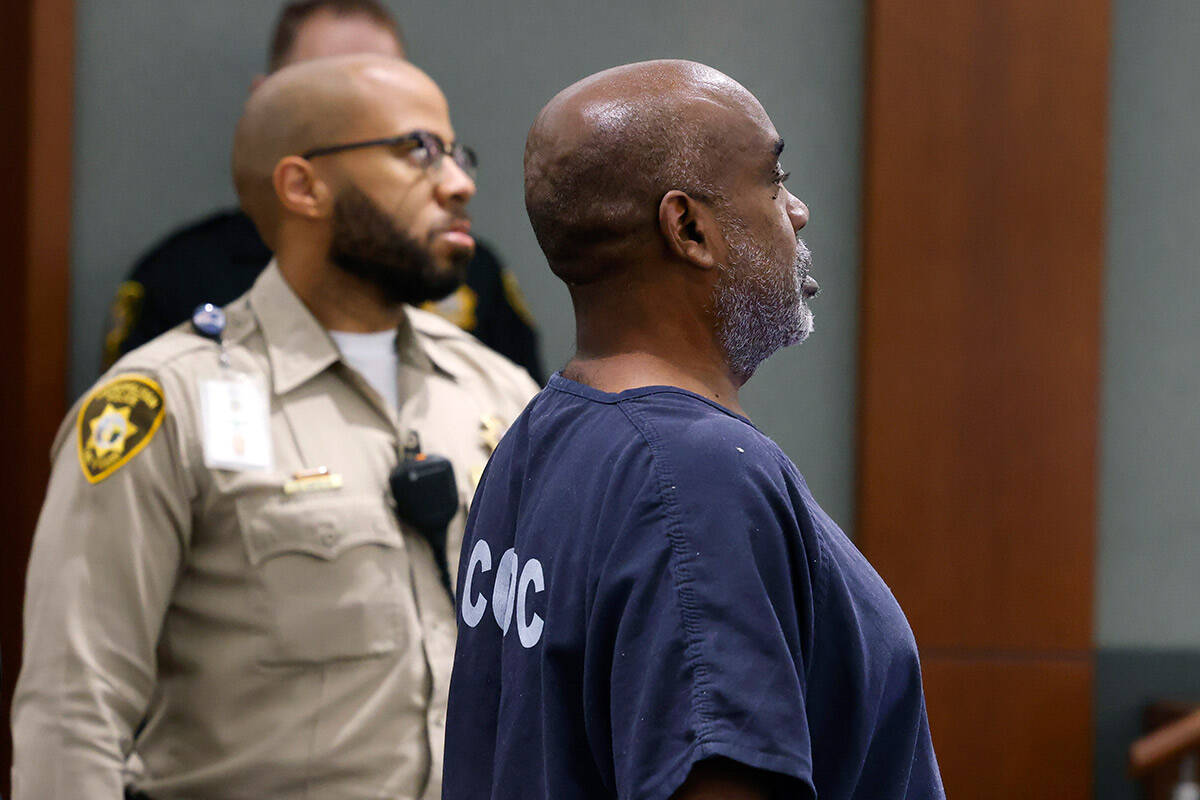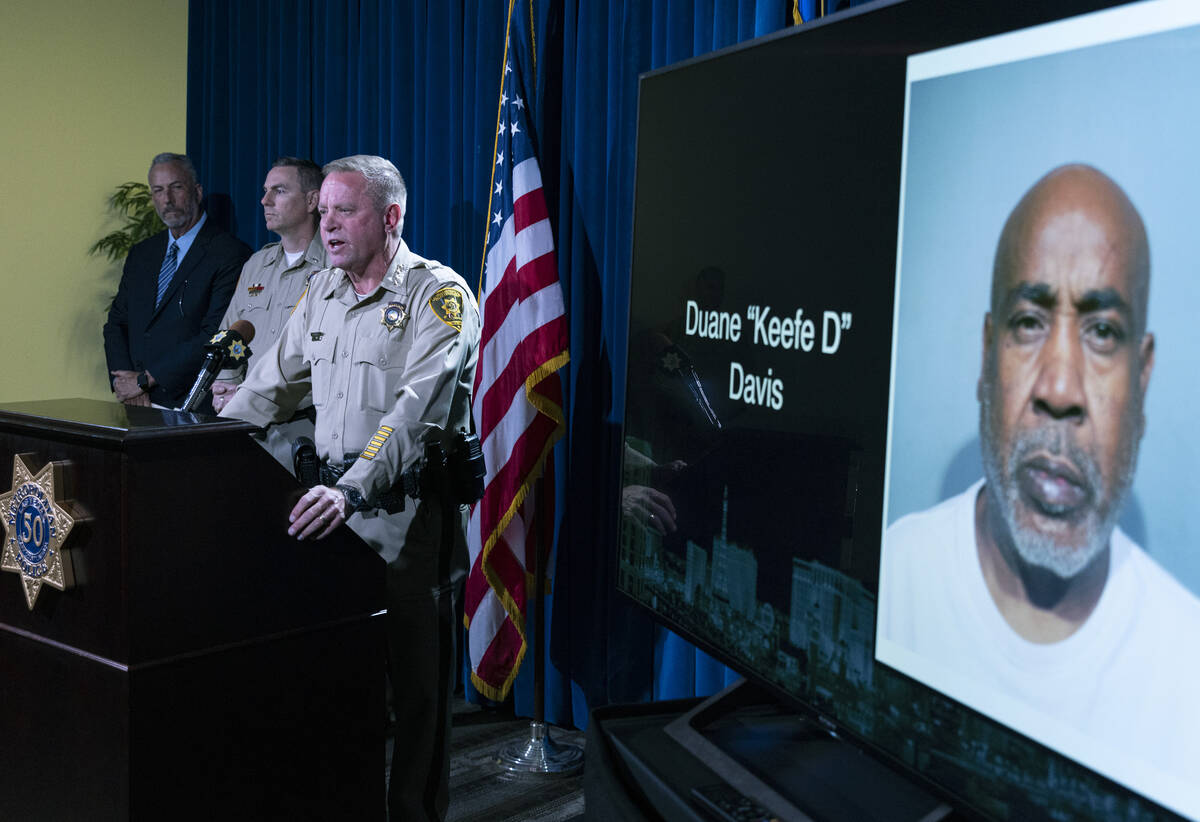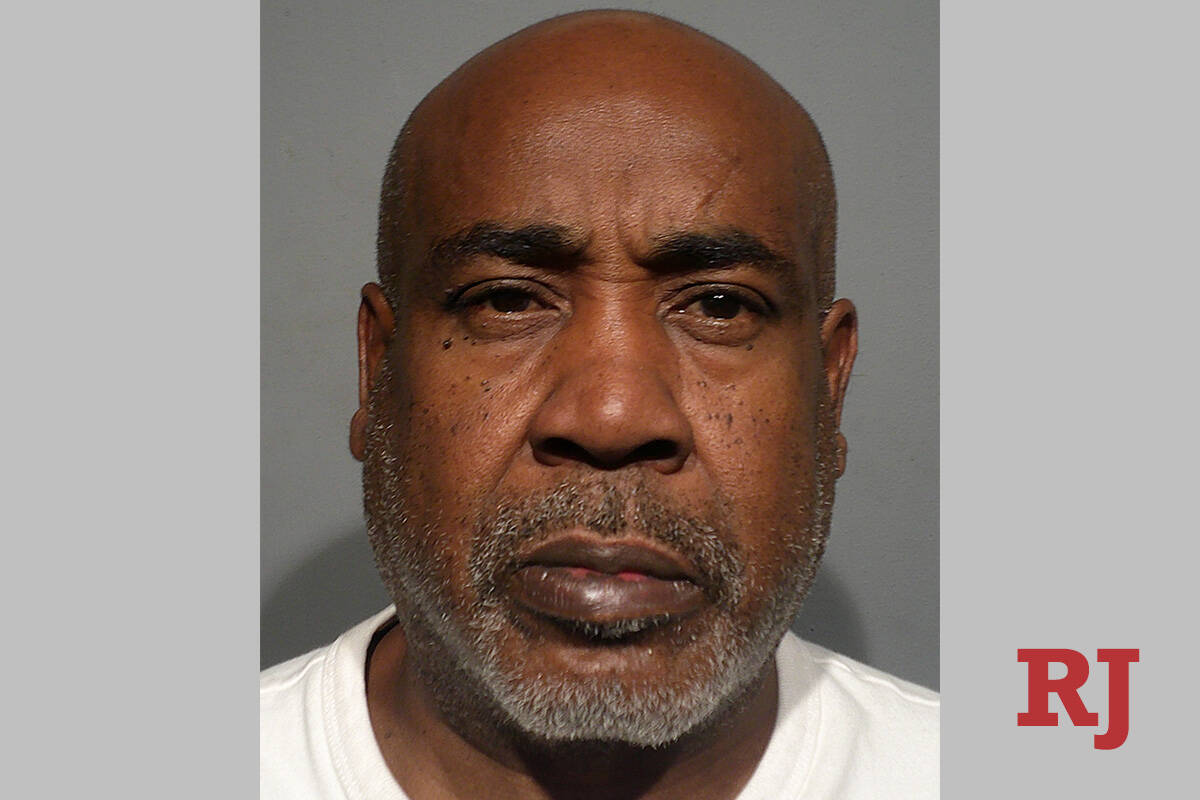‘It’s called a confession’: How Duane Davis’ statements can be used against him in Tupac case
Duane “Keefe D” Davis, believed to be the last surviving person who was in the car with Tupac Shakur’s killer, faces a complicated legal web of his own statements that authorities can use against him to prosecute the drive-by shooting of the hip-hop icon nearly three decades after the fact.
Greg Kading, the former Los Angeles Police Department detective who first publicized Davis’ claims that he was involved in Shakur’s killing, told the Review-Journal that the case could present an “interesting legal quagmire” for prosecutors.
“As long as the judge allows all of his public statements to be introduced as evidence, then I think it’s going to be overwhelmingly compelling,” Kading said in a phone interview on Friday.
Davis was arrested last week following his indictment on a charge of murder with a deadly weapon with the intent to further, promote, or assist a gang. Prosecutors are not claiming Davis shot Shakur on Sept. 7, 1996, rather that he was the “shot-caller” who came up with the plan to exact revenge on the rapper and Death Row Records CEO Marion “Suge” Knight in retaliation for an attack against his nephew, Orlando Anderson, earlier that night at the MGM Grand.
Shakur’s killing happened 27 years ago, but Las Vegas police took a renewed interest in the case in 2018, the same year Davis appeared in the BET documentary “Death Row Chronicles,” and the release of the scripted true crime series “Unsolved: the Tupac and Biggie Murders” brought the case back into the public eye. The TV shows came years after Kading published his own book — that the “Unsolved” documentary was based on — which included details of a 2009 interview between law enforcement and Davis.
That interview, for which Kading was present, was conducted by federal agents in what is known as a “proffer agreement.” Kading said federal law enforcement was planning to bring drug charges against Davis, and asked for information on Shakur’s killing in exchange for the potential of Davis facing a lighter sentence.
“None of us thought that he was going to walk on the drug charges,” Kading said. “All of us expected him to be charged.”
Kading released portions of the proffer agreement interview for a 2015 documentary based on his book, which pushed the theory that Davis’ nephew, Anderson, was the shooter. Davis went on to note in his co-written book, “Compton Street Legend,” that he was in the car with Shakur’s shooter when the shots rang out. He wrote that he obtained a gun and passed it to the men in the backseat — Anderson and Deandrae “Dre” Smith — but did not say who pulled the trigger.
Davis has since repeated the story in media interviews after his book release.
Proffer agreement
Criminal defense attorneys say that any statements Davis has made publicly since the proffer agreement interview is fair game for prosecutors.
Robert Langford, a former prosecutor who has also handled high-profile murder cases as a defense attorney, said that proffer agreements are “very limited in scope,” and may not apply to state prosecutors if the agreement was negotiated by federal agents. Investigators who enter proffer agreements also retain the right to confirm information independently to bring about charges.
Now that Davis has made public appearances and written his own book, prosecutors can “cherry pick” which statements to admit as evidence, Langford said.
Veteran defense attorney Tom Pitaro said that a defendant’s own statements are a clear exception to hearsay rules, which govern what witnesses can testify to in court.
“It’s difficult to deny your own statement,” Pitaro said. “There’s another word for that — it’s called a confession.”
Prosecutors have said Shakur’s killing was part of an ongoing feud between Davis’ crew with the South Side Crips, and the Bloods-associated Mob Piru gang, who were known to act as security for Knight at Death Row Records. The confrontation with Anderson at the MGM Grand stemmed from a fight at a mall weeks prior. Depending on which witness is testifying, Anderson had either attempted to, or had successfully taken, a Death Row Records chain from a Mob Piru member, who went on to attack Anderson with Shakur and his entourage at the casino.
Two hours later, Knight was driving Shakur in a black BMW near the Strip, leading a line of cars to Club 662, a known Mob Piru hangout. Davis wrote in his book that he and his crew, driving in a white Cadillac, spotted Shakur as he hung out a window to chat with four women in a convertible at the corner of Flamingo Road and Koval Lane. The Cadillac pulled a U-turn, and a large, muscular arm stuck out the back window, firing at Shakur and Knight. Shakur was shot four times, and Knight was grazed in the head by a bullet.
Shakur fell into a coma, dying six days later at University Medical Center.
In the years following, an LAPD detective in charge of investigating Christopher “Biggie” Wallace’s killing would theorize that the two rapper’s murders were linked, with Knight allegedly orchestrating the hit against Wallace, who was represented by the rival Bad Boy Records, in retaliation for Shakur’s death.
Retired Las Vegas detective Clifford Mogg, who was in charge of the renewed investigation into Shakur’s fatal shooting, testified to a grand jury that the two killings are related.
‘The hubris of Keefe D’
Under Nevada law, prosecutors do not need to prove that Davis pulled the trigger in order to charge him with murder. Instead, someone can face a murder charge for aiding and abetting in the crime.
Pitaro said the entire case is likely to be heavily litigated in the coming months or years. The outcome of a trial depends on what evidence can be admitted, and what a jury will believe about Davis’ own statements.
“The jury ultimately has to make the decision: How do they evaluate the statements?” Pitaro said. “Is it a true confession, is it a true admission of guilt, or is it something different?”
Langford, who worked as a prosecutor on the district attorney’s gang unit in the mid-1990s, said that adding a gang enhancement to a charge, like what Davis is facing, will allow prosecutors to push for a longer sentence. The state can also use evidence unrelated to Shakur’s killing to prove Davis was part of the gang, which he admits to in his book.
“Putting on a gang enhancement allows that evidence to come in, which otherwise might be irrelevant,” Langford said.
Up until police executed a search warrant at Davis’ home in July, Kading said he was “giving up hope” that anyone would be charged in Shakur’s killing.
Kading said he believes that Davis went public with his own story because Kading first publicized details of the proffer agreement interview. Even as Davis was in the back of a police car, being transported to the Clark County Detention Center, he brought up Kading’s name to a police officer and claimed he had been arrested for “the biggest case in Las Vegas history,” body-worn camera footage released on Thursday showed.
“You have to understand the hubris of Keefe D,” Kading said. “He is a legend in his own mind, and a legend wants to tell his own version of the story, and hope to get continued notoriety.”
Contact Katelyn Newberg at knewberg@reviewjournal.com or 702-383-0240.




















